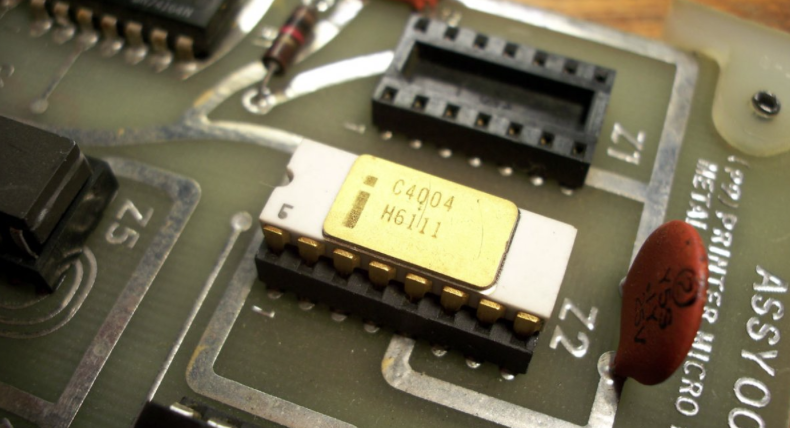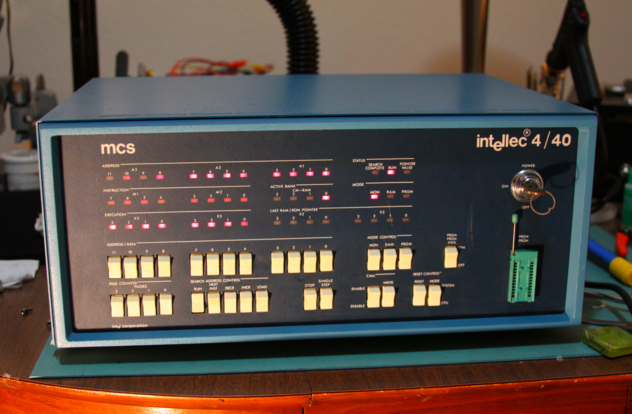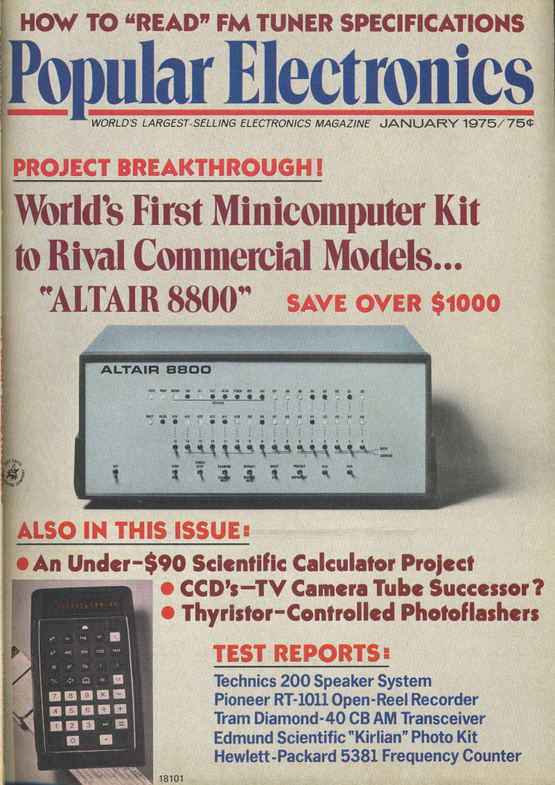44 years 4-bit Intel 4004 microprocessor
In 1969, the Japanese company Busicom ordered a dozen chips from Intel for its desktop calculator - the chips were highly specialized, they performed well-defined work, and for each application they had to re-develop the whole set. Intel employee Marshian Edward Hoff suggested that company management reduce the number of chips using a central processor. The collaboration resulted in a single-chip Intel 4004 microprocessor.
Intel 4004 was produced on the basis of a 10-micrometer process, contained more than two thousand transistors and worked with a clock frequency of 92.6 kilohertz.

The Intel 4004 processor had a sixteen-pin DIP package, the size of the crystal was three to four millimeters. On average, the microprocessor could execute sixty thousand instructions per second. This is a significant result when compared with ENIAC, which was built in the autumn of 1945: it performed five thousand instructions per second, but weighed twenty-seven tons and occupied almost three hundred square meters.
')
Intel's chip was a 4-bit microprocessor with a classic Harvard architecture. It numbered 2,250 transistors, was manufactured using 10-micron technology, worked with a clock frequency of 92.6 kHz, and was packed in a plastic or metal-ceramic case with 16 leads.
The processor was supplied with ROM, RAM chips and an I / O expander. For the development and testing of programs for the processor Intel sold Intellec-4 for about five thousand dollars.

Intellec 4/40 for 4040 processor
Intel 4004 is loved by collectors, but in a commercial sense, another microprocessor, Intel 8080, released in April 1974, became successful for Intel. Based on the 8080, the MITS Altair 8800 was built - it gave rise to all amateur personal computers.

Intel 4004 was produced on the basis of a 10-micrometer process, contained more than two thousand transistors and worked with a clock frequency of 92.6 kilohertz.

The Intel 4004 processor had a sixteen-pin DIP package, the size of the crystal was three to four millimeters. On average, the microprocessor could execute sixty thousand instructions per second. This is a significant result when compared with ENIAC, which was built in the autumn of 1945: it performed five thousand instructions per second, but weighed twenty-seven tons and occupied almost three hundred square meters.
')
Intel's chip was a 4-bit microprocessor with a classic Harvard architecture. It numbered 2,250 transistors, was manufactured using 10-micron technology, worked with a clock frequency of 92.6 kHz, and was packed in a plastic or metal-ceramic case with 16 leads.
The processor was supplied with ROM, RAM chips and an I / O expander. For the development and testing of programs for the processor Intel sold Intellec-4 for about five thousand dollars.

Intellec 4/40 for 4040 processor
Intel 4004 is loved by collectors, but in a commercial sense, another microprocessor, Intel 8080, released in April 1974, became successful for Intel. Based on the 8080, the MITS Altair 8800 was built - it gave rise to all amateur personal computers.

Source: https://habr.com/ru/post/368981/
All Articles